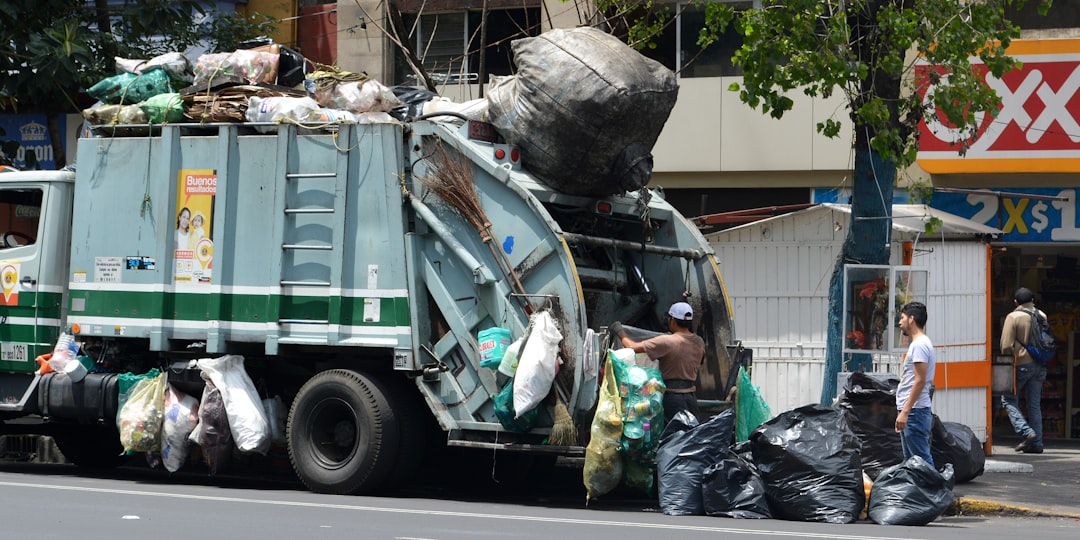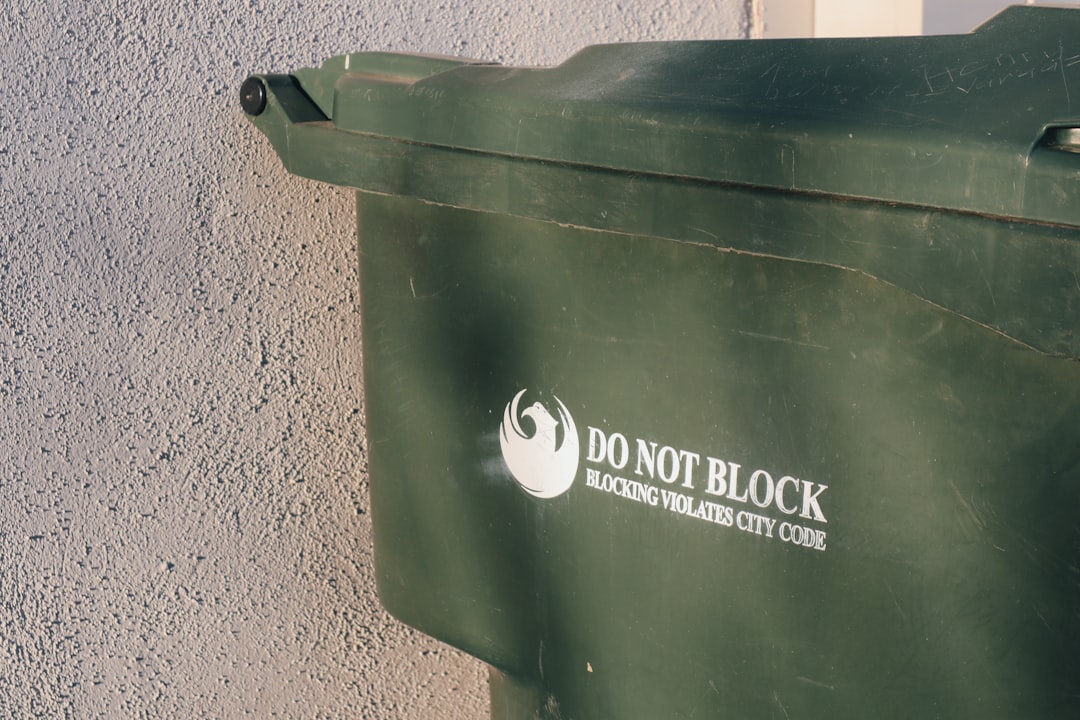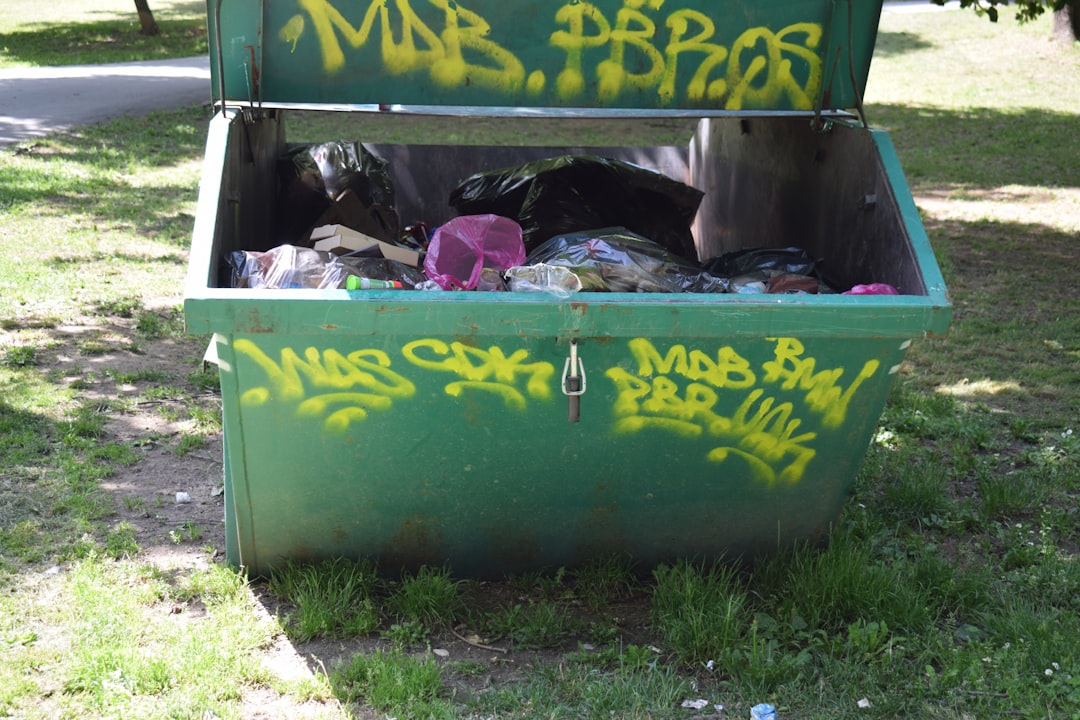

Engage prospects with a scan and streamline customer engagement with FREE QR code marketing tools by Sona – no strings attached!
Create a Free QR CodeFree consultation

No commitment

Engage prospects with a scan and streamline customer engagement with FREE QR code marketing tools by Sona – no strings attached!
Create a Free QR CodeFree consultation

No commitment
Trash can cleaning services are rapidly evolving as customers seek more hygienic, convenient, and environmentally friendly waste management options. Yet the hyper-local nature of this industry makes marketing complex, and customer acquisition is often limited by manual processes, inconsistent follow-up, and a lack of visibility into what actually drives bookings. Too many high-value prospects see a door hanger or a truck decal, express interest privately, and then slip away without converting.
Traditional tactics like print flyers, door tags, and word of mouth rarely provide measurable results or indicate which outreach methods are effective. As consumer behavior shifts toward mobile-first experiences, QR codes provide a reliable bridge from physical touchpoints to digital actions. One scan connects someone at the curb to a booking page, a payment link, or a review form, while giving your team real data about where interest originated.
For trash can cleaning businesses, QR codes are essential for capturing and tracking offline intent whether at the curb, in the mailbox, on community boards, or on service trucks. By embedding QR codes at key moments in the customer journey, you can drive more bookings, collect reviews, upgrade service tiers, re-engage lapsed accounts, and attribute revenue back to specific assets and neighborhoods. QR-powered programs turn passive impressions into measurable growth.

Manual processes often create missed follow-ups and lost prospects, especially in localized service markets where timing and responsiveness make all the difference. A neighbor may see your bin sticker, plan to call later, then forget. A resident might receive a flyer but never find the website. Without an easy, trackable way to respond in the moment of interest, both intent and attribution are lost. QR codes remove that friction by making the next step instantaneous.
Think about the analog workflows that still dominate: paper estimate forms, printed brochures with generic URLs, manual sign-up sheets at HOA meetings, and door hangers that ask someone to call or type a web address. Replace each of those with QR-enabled experiences. Scanning a code to book an appointment, claim a neighborhood discount, or schedule recurring service takes seconds, captures contact information, and triggers automated follow-up in your CRM. The result is a smoother path to revenue with fewer leaks.
Integrated QR platforms like Sona QR let you create, monitor, and refine every code through its lifecycle while syncing data into tools such as HubSpot or Salesforce. This transforms labor-intensive outreach into scalable, measurable acquisition that adapts as your routes and seasons shift. Start creating QR codes for free.

Visibility and conversion speed drive success in hyper-local services. The challenge is not only getting noticed, but converting attention into a booked job before the resident’s intent fades. The traditional gap between offline marketing and digital follow-up means many prospects are never identified or nurtured. QR codes address this gap with a mobile-first action that is both easy for customers and measurable for operators.
QR codes also replace guesswork with data. Instead of hoping your door hanger worked, you see exactly how many scans occurred, where they happened, and which placements converted. If you change a promotion, you do not need to reprint everything. Dynamic QR codes let you swap destinations in seconds, so every physical asset remains relevant.
For trash can cleaning brands, QR codes convert passive visibility into measurable conversions. A single scan connects a resident to a booking form while providing the operator with attribution that supports smarter investment and faster growth.
QR codes come in multiple formats that support different actions and experiences. For trash can cleaning services, formats that streamline booking, payments, and customer communication deliver the most value. Choosing the right type for the job ensures scanners have a smooth experience and you collect the data needed to optimize.
With Sona QR, you can generate any of the formats below, route each code to the right destination, and manage all codes in one place. Use dynamic options when campaigns evolve or when attribution and retargeting matter.
Dynamic formats are recommended for campaigns you plan to iterate. Static formats are suitable for evergreen content like saving contact info or linking to a permanent FAQ page.

High-value prospects often encounter your brand physically. They see a crew on the block, a shiny bin with your sticker, or a door tag after municipal pickup. Without an easy way to respond and a system to track engagement, that interest disappears. QR codes transform these moments into scalable acquisition and retention.
Mapping QR codes to every part of your local presence unlocks continuous lead capture. The objective is not to scatter codes everywhere. It is to match each code to a specific action tied to a business outcome, then measure performance so you can redeploy marketing budget with confidence.
These placements turn passive impressions into active leads that land in your CRM. Over time, you will learn which combinations of placement and message convert best in your market and season.

Use cases that meet customers where they are and remove friction from the next step deliver the strongest returns. Concentrate first on actions that drive revenue and prove attribution, then layer on retention and advocacy.
Together, these use cases capture real-time demand, create upsell moments, and close the loop on post-service engagement that would otherwise be missed.
Every QR scan is a signal. It tells you who is curious, what they want, and where they engaged. By deploying multiple codes across touchpoints, you automatically segment your audience based on behavior and context. This segmentation fuels effective intent-driven retargeting and lifecycle communication, turning first scans into long-term revenue.
When you connect your QR platform to a CRM or ad system, scan activity becomes the trigger for email, SMS, and paid media. A neighbor who scans a door hanger for a first-time discount receives a different message than a subscriber scanning to reschedule. The right follow-up at the right time lifts conversion and retention metrics across the board.
Sona QR simplifies this by making every code a smart entry point into your funnel. Scans become behavior-based segments rather than anonymous traffic, which improves both the customer experience and your return on ad spend.
Trash can cleaning operators often juggle a mix of offline and digital channels without a unified way to measure results. QR codes act as the connective tissue. They give each print asset, vehicle, and neighborhood sign a direct tie to a digital destination, closing the loop from impression to action to attribution.
When placed thoughtfully, QR codes enhance every major channel you use. They reduce friction, capture data, and enable rapid optimization. The key is to pair each code with a specific call to action and destination that fits the channel’s context and the customer’s state of mind.
With a centralized platform like Sona QR, you can manage codes across all channels, compare performance, and sync scan data to your CRM. That gives you a single source of truth for marketing effectiveness and revenue attribution.
Before you print a single sticker or wrap a truck, align your QR strategy with business outcomes. The following steps will help you plan, launch, and optimize a campaign that turns neighborhood attention into measurable growth.
A successful rollout starts with focus. Choose one or two high-impact use cases, validate them with real-world tests on your routes, then build from there. Use dynamic QR codes where flexibility and data matter, and make sure every scan triggers the next best action.
Clarify what success looks like in the next 30 to 90 days. Pick a single priority for your first campaign so your team can design an experience that nudges scanners to that specific outcome. Goals in this vertical often include booking first-time cleanings, re-engaging inactive households after peak seasons, or converting one-time jobs into subscriptions.
Choose static codes for permanent assets where the destination will not change, and dynamic codes for any campaign that requires tracking, retargeting, or frequent updates. Dynamic codes are ideal for flyers, door hangers, yard signs, and truck wraps where you want both agility and analytics.
Design codes that are easy to spot and confidence-inspiring. Include your logo, brand colors, and a clear visual frame so the code stands out. Place a compelling call to action near the code that explains the benefit of scanning, not just the action.
Roll out your codes across the physical surfaces and media your audience already sees. Match placement to behavior and context. For example, a curbside bin sticker should link directly to a booking page, while a truck wrap might direct to a short education page with a seasonal promotion.
Measure performance from day one. Use analytics to identify which assets, messages, and neighborhoods drive the highest scan-to-booking rates. Adjust creative, offers, and placements quickly. Feed scan data into your CRM for lifecycle follow-up at scale.
Attributing marketing touchpoints to revenue is a persistent challenge for local cleaning brands. QR-driven campaigns fix this by turning every scan into a measurable event that links a physical impression to a digital conversion. You can see which assets people scanned and tie appointments, upgrades, and referrals to the exact source.
Traditional tools often stop at counting visitors. The advantage with a platform like Sona QR is end-to-end visibility. You capture scan-level data, connect it to CRM records, and attribute revenue to campaigns with confidence. That creates a repeatable process for investment: more of what works, less of what does not.
With this analytics foundation, you can prove ROI on each printed asset and route your budget to the channels and blocks that actually drive revenue.
Inconsistent QR deployment leads to missed scans and misleading data. A disciplined approach ensures your codes not only get noticed but also produce clear outcomes. Start by making every code unique to its placement, pair it with a strong value proposition, and automate follow-up so no interest goes to waste.
Your crews are a crucial part of the system. Train them to mention the code casually during service and to leave assets in clean, scannable condition. Small operational habits like wiping bin stickers and positioning door hangers at eye level can meaningfully lift scan rates.
Continuous improvement keeps your program agile. Review performance monthly, retire underperforming assets, and scale winners into adjacent neighborhoods and seasons.

Operators who systematize QR deployment often see surprising compounding effects. A single scan can become a booking, a review, and a referral when the experience is designed end to end. Using unique codes for each channel keeps the loop closed so you know what to replicate.
Some startups report up to a 30 percent increase in bookings after introducing QR-powered referral and review workflows. The principle is consistent: connect offline brand moments to clear digital actions with immediate value for the resident.
Low scan rates usually stem from weak calls to action, poor placement, or difficult scanning conditions. The cure is simple: design for the real world and speak to what the resident actually wants in the moment. Provide a specific promise and make the payoff immediate.
Operational discipline matters as much as design. Codes placed on surfaces that get dirty, bent, or shaded will underperform. Update dynamic code destinations frequently, especially when schedules, offers, or routes change. Make every scan feel current and worthwhile.
When physical and digital touchpoints are integrated thoughtfully, QR codes drive higher conversion, measurable ROI, and durable growth pipelines for local cleaning brands.
QR codes have become essential for trash can cleaning service providers aiming to modernize growth strategies, prevent lost leads, and deliver seamless customer experiences. By incorporating QR codes throughout the service journey, businesses address longstanding challenges with anonymous prospects, untracked offline engagement, and vague attribution. Every scan becomes a clear path closer to revenue.
With this data-driven approach, teams can identify high-intent signals, nurture valuable leads, and justify marketing investments with evidence rather than gut feel. For deeper measurement discipline, see revenue attribution. The result is stronger visibility, more conversions, and new opportunities for sustainable long-term growth. For operators ready to move forward, deploying QR strategies with platforms like Sona QR and Sona.com is a proven path to more bookings and operational efficiency.
QR codes have revolutionized trash can cleaning services by transforming routine maintenance interactions into seamless, trackable customer engagement opportunities. Whether it’s streamlining service access, improving customer communication, or optimizing scheduling, QR codes replace cumbersome manual processes with instant, mobile-friendly actions that capture real-time data to enhance operational efficiency and client satisfaction. Imagine instantly knowing which service areas need attention and providing customers with hassle-free booking and service updates—all through a simple scan.
With Sona QR, you can create dynamic, trackable QR codes in seconds that update campaigns without reprinting and connect every scan directly to service metrics and customer feedback. This means no missed appointments, better customer retention, and actionable insights that drive smarter business decisions. Start for free with Sona QR today and turn every scan into a cleaner, more efficient, and customer-centric trash can cleaning experience.
Effective strategies include using QR codes on door hangers, bin stickers, flyers, and service trucks to enable instant digital booking, frictionless payment, real-time analytics, automated follow-up, and rapid message updates.
You can place QR codes on physical assets like bin stickers, door hangers, truck decals, and mailers to connect customers instantly to booking pages, payment portals, review forms, and promotional offers while tracking engagement and improving follow-ups.
Creative methods include curbside referral stickers offering discounts, QR codes on invoices for reviews and upgrades, seasonal flyers with dynamic offers, and placing QR codes on community boards, uniforms, and yard signs to engage residents in multiple touchpoints.
Start by defining clear goals, select appropriate static or dynamic QR code formats, design codes with strong calls to action, deploy them strategically across channels, and track scan data to optimize offers and placements continuously.
Best practices include assigning unique QR codes per asset, using dynamic codes for flexibility, training crews to promote codes, automating follow-ups, ensuring clear value-driven CTAs, maintaining clean and visible placements, and regularly updating content to keep it fresh.
Use Sona QR's trackable codes to improve customer acquisition and engagement today.
Create Your FREE Trackable QR Code in SecondsJoin results-focused teams combining Sona Platform automation with advanced Google Ads strategies to scale lead generation

Connect your existing CRM

Free Account Enrichment

No setup fees
No commitment required

Free consultation

Get a custom Google Ads roadmap for your business






Launch campaigns that generate qualified leads in 30 days or less.
